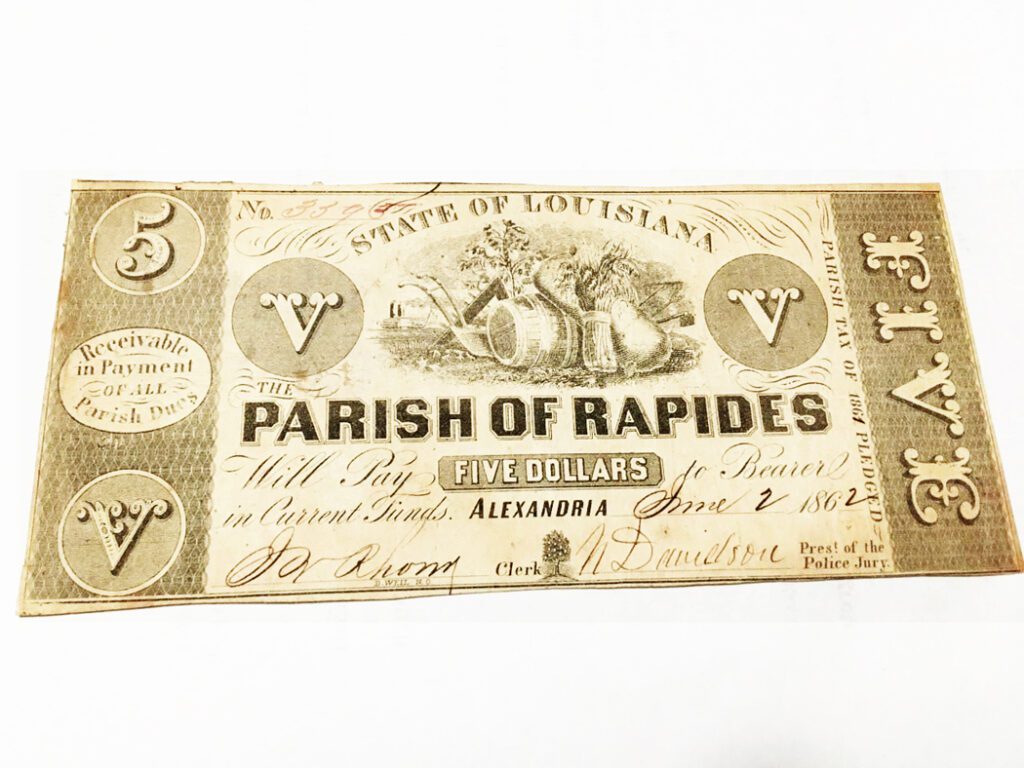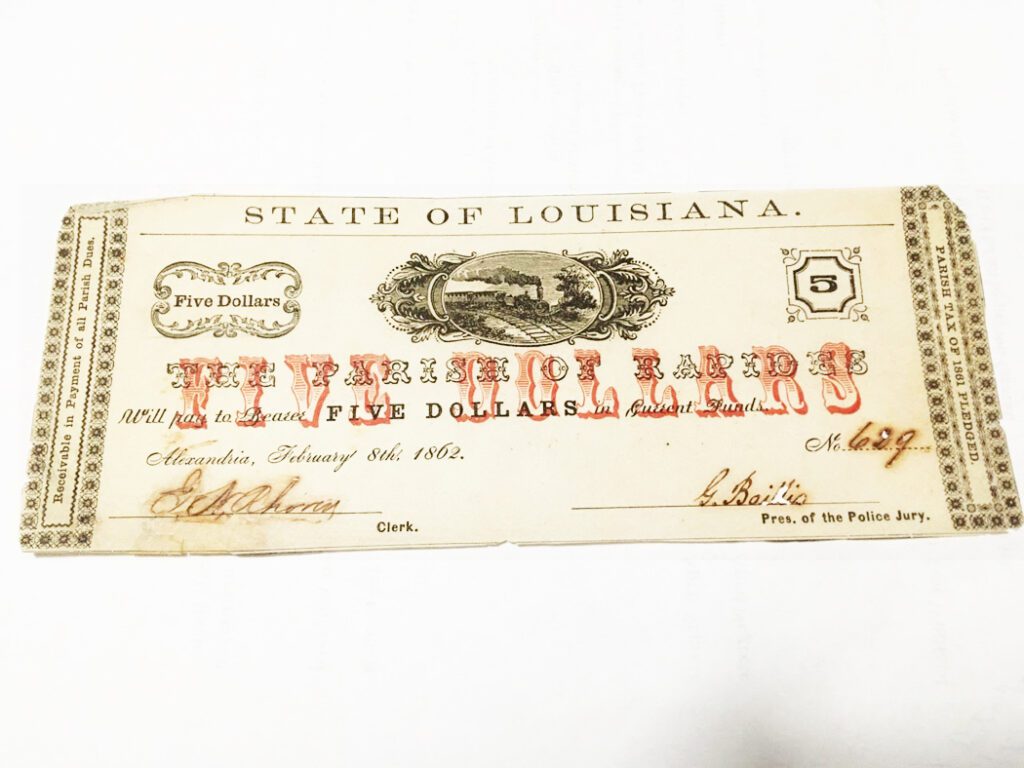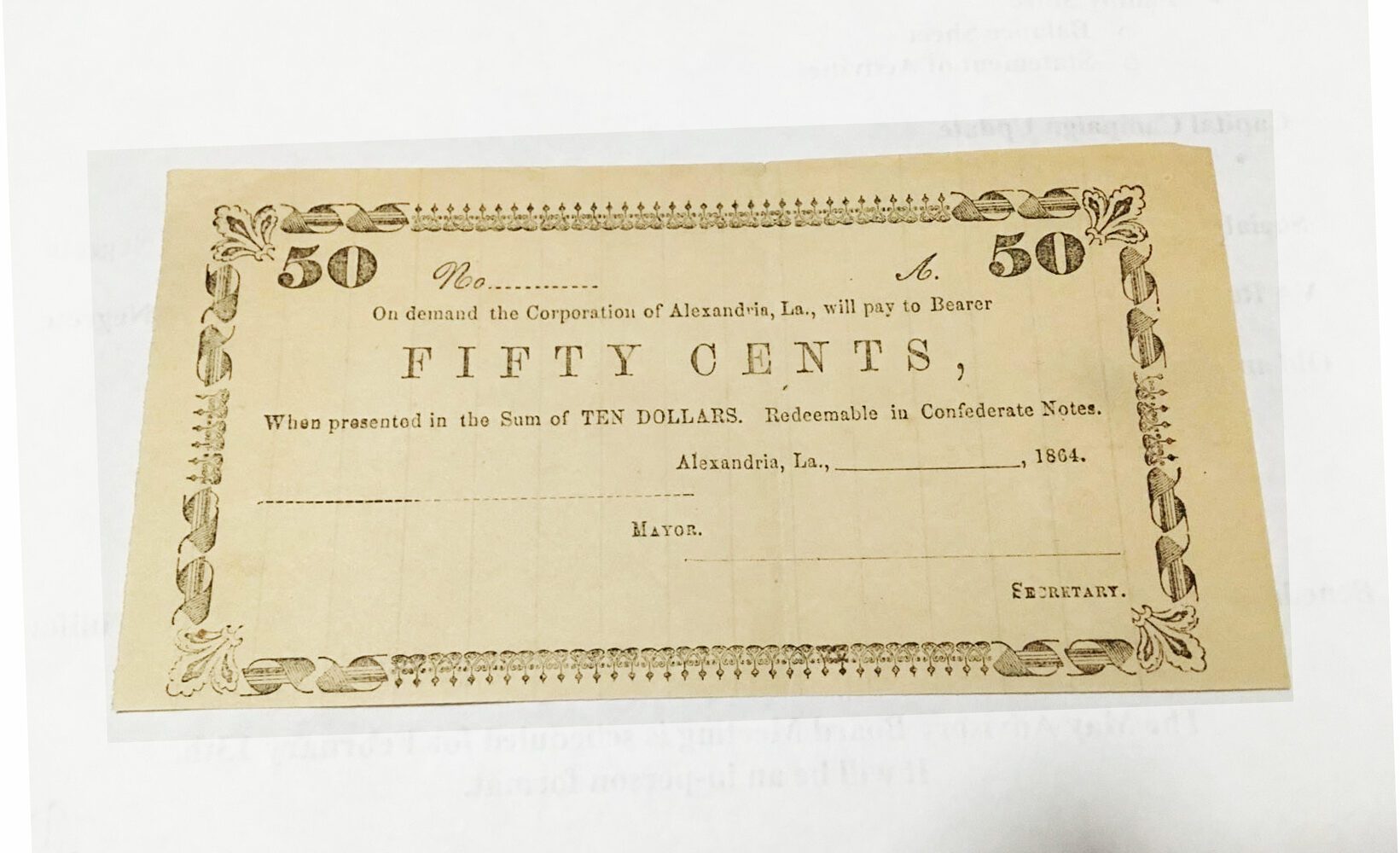by Michael D. Wynne
Whether you live in Alaska or in Florida, when you open up your purse or billfold, everyone sees the same United States currency. These days our notes, if you haven’t noticed before, are all “Federal Reserve Notes.” In past years, we could have been carrying “Silver Certificates’, “Gold Certificates,” “United States Notes,” or variations thereof. But the common denominator to what all Americans carry and spend these days are uniform-looking United States currency.
But that hasn’t always been so. We know in our earliest years of the republic and before that, people bartered or traded their products and valuables in business dealings.
We can remember reading back in school about the significant trade in fur skins by the early pioneers, but early Americans also traded in all sorts of goods. Depending upon what country controlled an area, such as Spain and France at one time having “owned” large parts of Louisiana, Louisiana’s provincial citizens also used the coinage and paper money of their native country, such as Francs during the French regime here in Louisiana in the early 1800’s.
By the time Louisiana became a state in 1812, the United States was regularly issuing coinage, from “half cents,” all the way to $20 Gold coins (“double eagles”), beginning in the mid 1790’s. But the United States didn’t regularly issue paper money till the 1860’s. Why? There are so many reasons for this that whole books have been written about it, not the least of which was Americans’ distrust of nationalized paper money in the time of financial instability.
So back then, there existed two forms of large-value currency: United States gold coins, ranging from the $1 to $20 gold pieces, and locally-issued paper money currency. The locally-issued paper money reached a peak in the South during the Civil War when U.S. currency was not only unavailable, but was considered illegal.
This war created a temporary, major industry of the issuance of local paper money. Yes, the “Confederate States of America” did issue their own series of currency, but in Louisiana, as well as elsewhere in the South, every state, parish (in Louisiana), city, private bank, and business seemingly issued their own individual currency!
Very little was required to issue your own currency; the issuing business just had to be able to redeem (exchange) their currency on demand by people for silver, gold, or some other publicly acceptable valuable.
So, it finally arrive at Rapides Parish and Alexandria. Rapides Parish was quite poor and sparsely populated in 1862 so the only entity that initially issued money in Rapides Parish was the Rapides Police Jury who issued various denominations ranging from the $1 to the $10 note between February and June of 1862. The Police Jury paper
money then was signed by Gervais Baillio, President of the Police Jury and the son of the founder of Kent House plantation. All of the varying notes indicated that they were, “Receivable in Payment of all Parish Dues,” meaning parish taxes.
But the rarest of all local currency in Louisiana is the City of Alexandria currency, of which only two known 50 cent examples still survive. The 1862 notes were hand-signed by the mayor and city council secretary. It states, among other things, “When presented in the Sum of TEN DOLLARS, (it is) Redeemable in Confederate Notes…” By 1864, the real value of Confederate Notes was so low that this currency was virtually valueless. For that reason, likely few notes were ever issued and only two have survived the 160 years passage of time. This likely makes the surviving notes the rarest and most sought after items that exist in Central Louisiana!
Special Note: After this article was written, two brief TOWN TALK articles were brought to my attention by historian Paul Price:
January 25, 1905- “Mr. Willie Wilson of Welchton showed the Town Talk yesterday some old scrip issued by the town of Alexandria in 1862. The denomination was $3m and it was signed by Isaac N. Toy Jr., Secretary, and R. Legras, Mayor. Mr. Wilson has $10,000 of old Confederate currency.”
February 13, 1911- “Mr. S. N. Thomas of Winnfield, La., was a business visitor in this city today. He called at the Town Talk office and showed a collection of the old money or scrip which had been collected by his father, Mr. J. N. Thomas of Winnfield. In the collection was a piece of Alexandria scrip which reads: ‘The corporation of the Town of Alexandria will pay to bearer Fifty cents, redeemable on presentation in Confederate notes, in the sums of Twenty Dollars. Signed Isaac N. Toy, secretary; R. Legras, mayor.’ It is numbered 1116 and is dated September, 1862.”



























